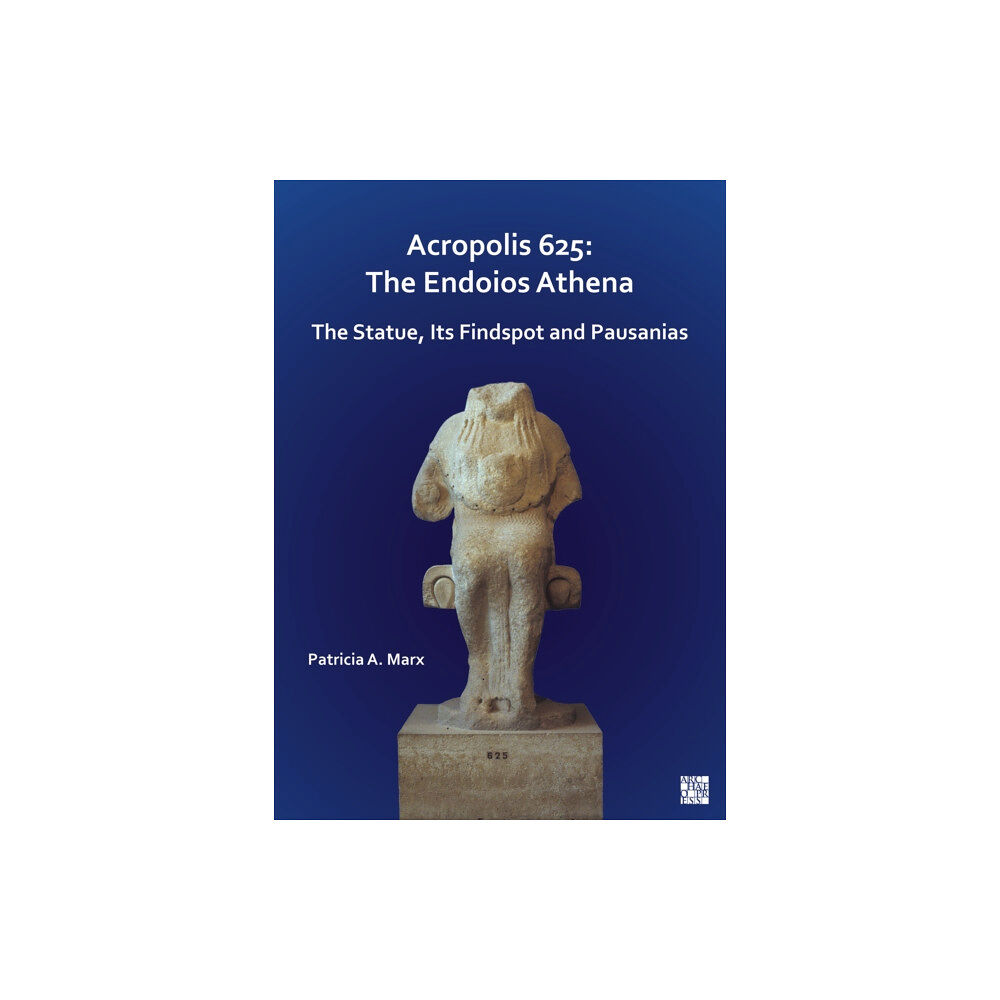- Hem
- Böcker
- Kurslitteratur
- Historia
- Acropolis 625: The Endoios Athena (häftad, eng)

Acropolis 625: The Endoios Athena (häftad, eng)
Acropolis 625: The Endoios Athena is an interdisciplinary in-depth study of an important Archaic statue of Athena, carved in c. 525 B...
559 kr
605 kr
Slut i lager
- Fri frakt
Fri frakt över 299:-
Snabb leverans
Alltid låga priser
Produktbeskrivning
Acropolis 625: The Endoios Athena is an interdisciplinary in-depth study of an important Archaic statue of Athena, carved in c. 525 BC. The author’s detailed examination reveals that, unlike earlier seated statues, it is an active figure. For this reason the right stool seat was pieced on by the sculptor himself.
The author deduces that the goddess was a fully armed image of Athena Polias as defender of the city-state. Having escaped destruction during the Persian Invasion of c. 480-79 BC, the statue sustained severe damage in Late Antiquity, most likely during the Herulian Invasion of c.
AD 267. Afterwards it was built into a memorial wall on the north slope of the Acropolis, right side up and facing forward. This wall was placed directly below that portion of the north citadel wall containing part of the entablature of the Late Archaic temple of Athena Polias destroyed by the Persians.
The Endoios Athena was seen by Pausanias in c. AD 150-55, and he mentions it directly prior to the Erechtheion. Pausanias’s route on the top of the Acropolis citadel and the various suggestions for the location of the Erechtheion are examined in detail. The author opts for the traditional interpretation that the Erechtheion was located in the Karyatid Temple and offers an educated guess as to where Pausanias saw the Endoios Athena.
The author deduces that the goddess was a fully armed image of Athena Polias as defender of the city-state. Having escaped destruction during the Persian Invasion of c. 480-79 BC, the statue sustained severe damage in Late Antiquity, most likely during the Herulian Invasion of c.
AD 267. Afterwards it was built into a memorial wall on the north slope of the Acropolis, right side up and facing forward. This wall was placed directly below that portion of the north citadel wall containing part of the entablature of the Late Archaic temple of Athena Polias destroyed by the Persians.
The Endoios Athena was seen by Pausanias in c. AD 150-55, and he mentions it directly prior to the Erechtheion. Pausanias’s route on the top of the Acropolis citadel and the various suggestions for the location of the Erechtheion are examined in detail. The author opts for the traditional interpretation that the Erechtheion was located in the Karyatid Temple and offers an educated guess as to where Pausanias saw the Endoios Athena.
| Format | Häftad |
| Omfång | 200 sidor |
| Språk | Engelska |
| Förlag | Archaeopress |
| Utgivningsdatum | 2022-11-17 |
| ISBN | 9781803272535 |
Specifikation
Böcker
- Häftad, 200, Engelska, Archaeopress, 2022-11-17, 9781803272535
Leverans
Vi erbjuder flera smidiga leveransalternativ beroende på ditt postnummer, såsom Budbee Box, Early Bird, Instabox och DB Schenker. Vid köp över 299 kr är leveransen kostnadsfri, annars tillkommer en fraktavgift från 29 kr. Välj det alternativ som passar dig bäst för en bekväm leverans.
Betalning
Du kan betala tryggt och enkelt via Avarda med flera alternativ: Swish för snabb betalning, kortbetalning med VISA eller MasterCard, faktura med 30 dagars betalningstid, eller konto för flexibel delbetalning.
Specifikation
Det finns tyvärr inga specifikationer att visa för denna produkt.
